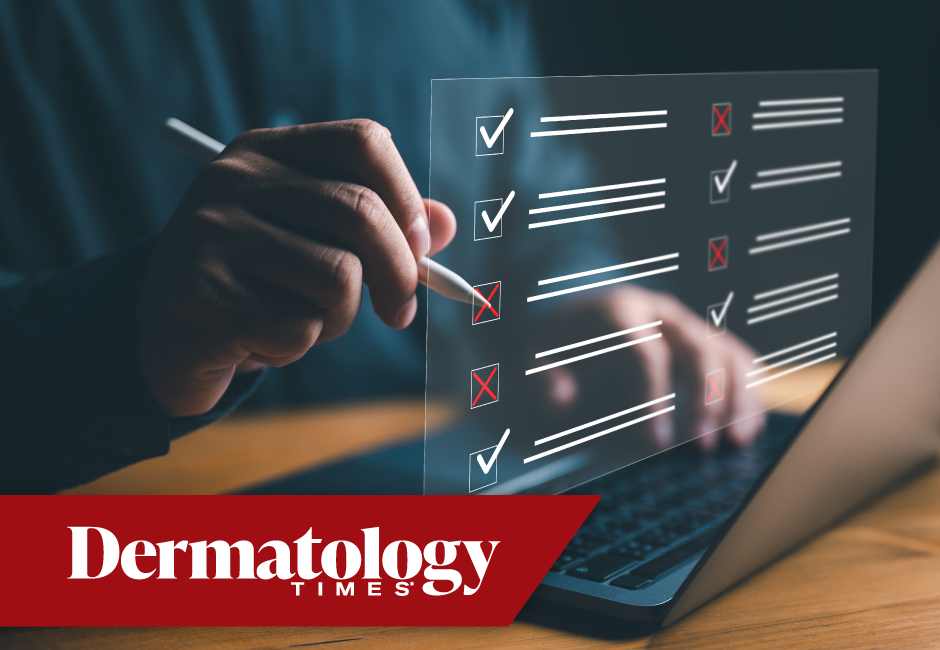- Case-Based Roundtable
- General Dermatology
- Eczema
- Chronic Hand Eczema
- Alopecia
- Aesthetics
- Vitiligo
- COVID-19
- Actinic Keratosis
- Precision Medicine and Biologics
- Rare Disease
- Wound Care
- Rosacea
- Psoriasis
- Psoriatic Arthritis
- Atopic Dermatitis
- Melasma
- NP and PA
- Skin Cancer
- Hidradenitis Suppurativa
- Drug Watch
- Pigmentary Disorders
- Acne
- Pediatric Dermatology
- Practice Management
- Prurigo Nodularis
- Buy-and-Bill
Article
Finding cure for onychomycosis remains a complicated objective
Topical therapies currently in use have not effectively treated onychomycosis, a condition that is recurrent.
Portland, Ore. - Topical therapies currently in use have not effectively treated onychomycosis, a condition that is recurrent.
“The reason that they are not as effective is because the condition is a nail bed problem,” says Phoebe Rich, M.D., F.A.A.D., adjunct professor of dermatology, Oregon Health Sciences University, Portland, Ore. “It (the fungus) is primarily under the nail. Topical antifungal drugs applied to the surface of the nail plate don’t always penetrate to the site of the infection. At least, the traditional agents do not.”
In contrast, systemic therapies reach the nail bed through the circulation and are deposited in the nail plate from the nail matrix, making them much more effective in treating onychomycosis, but they present a greater potential risk of side effects, Dr. Rich says.
New topicals, however, are on the horizon, Dr. Rich notes. Efinaconazole is a triazole antifungal that has been extensively studied and has demonstrated mycologic cure rates that far exceed rates with placebo, p<0.001. Complete cure rates were also much greater, p<0.001 (Elewski BE, Rich P, Pollak R, et al. J Am Acad Dermatol. 2013;68(4):600-608).
Devices such as lasers would be a preferred modality for managing onychomycosis, Dr. Rich says, but she notes that the data that has emerged from studies thus far is not as compelling as data on systemic or topical therapies.
Achieving a cure
Defining cure in onychomycosis is complex. Clinical cure is the appearance of a healthy nail, mycologic cure is demonstrated by the absence of fungus by mycology, and complete cure is achieving both, Dr. Rich explains.
“It may be that a nail is free of fungus and returns back to baseline, but that back to baseline is not a normal (looking) nail,” she says.
It is important that clinicians not use solely clinical judgment to diagnose onychomycosis, Dr. Rich says.
“Lots of other nail conditions like psoriasis and traumatic nail dystrophy can look like onychomycosis,” she says. “You need to confirm the presence of fungal organisms prior to treating so that you don’t treat nonfungal conditions with an antifungal.”
A potassium hydroxide (KOH) preparation and a clipping for periodic acid-Schiff (PAS)-stain can be done fairly quickly and inexpensively.
The limitation is that a KOH test and PAS clippings will not tell you if the organism is a dermatophyte, a yeast, or a mold, Dr. Rich says.
“When you need to identify the organism, a culture should be performed,” she says, but notes that the sensitivity of culture and KOH is far less than 100 percent.
Polymerase chain reaction (PCR) technology to diagnose onychomycosis is currently not commonly used in the community setting, but it’s a definitive test in spotting fungus, Dr. Rich says. “There are fewer false negatives (with PCR).”
Systemic treatments
Systemic options available in the United States for treatment of onychomycosis include terbinafine and itraconazole. Fluconazole, although not approved by the Food and Drug Administration for onychomycosis, can be used to treat nail fungus with once weekly dosing, Dr. Rich says. Recent reports of fatal liver toxicity related to ketoconazole has made this drug no longer a systemic option to treat onychomycosis, she says.
Given onychomycosis is a recurrent condition, it is important to take steps to avoid recurrence and reinfection, according to Dr. Rich.
“The real issue is that some patients have a genetic predisposition to this condition, and have the tendency to develop it again,” she says.
For those individuals, using a topical antifungal daily on their feet and toenails may prevent reinfection by acting as a barrier if they are exposed to spores in settings like gyms, suggested Dr. Rich.
Recent published data point to other preventative measures that can be taken to ensure nail fungal infections do not recur.
When patient footwear is contaminated with fungal material, ozone gas is an effective tool for sanitizing footwear (Gupta AK, Brintnell WC. J Cutan MedSurg. 2013;17(4):243-249).
Laundering is another step to prevent recurrence of onychomycosis. One study concluded that doing laundry when the water temperature was 60 degrees Celsius eliminated both Tricophyton rubrum and Candida albicans (Hammer TR, Mucha H, Hoefer D. Mycopathologia. 2011;171(1):43-49).
Disclosures: Dr. Rich is a clinical trials investigator for Valeant Pharmaceuticals.





